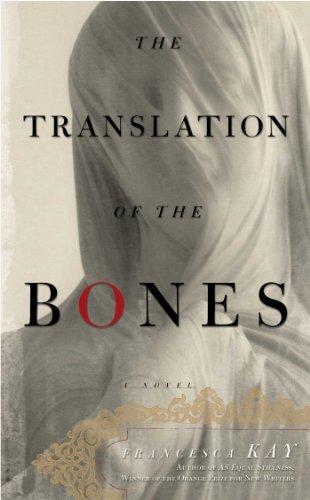
TRANSLATION OF THE BONES
Mary-Margaret O’Reilly is seemingly a harmless enough young woman, ready and willing to help out Father Diamond in the Sacred Heart church in Battersea. She may not be very bright, and she is sadly overweight, but she can certainly clean. She is also very good with children, and helps out an Asian woman on her estate whose little boy Shamso is adorable.
It is the statue of Jesus on the cross Mary-Margaret is especially drawn to, and one day she decides to give Him a thorough and loving cleansing. But then something strange happens, and moments later she lies unconscious,
Mary-Margaret O’Reilly is seemingly a harmless enough young woman, ready and willing to help out Father Diamond in the Sacred Heart church in Battersea. She may not be very bright, and she is sadly overweight, but she can certainly clean. She is also very good with children, and helps out an Asian woman on her estate whose little boy Shamso is adorable.
It is the statue of Jesus on the cross Mary-Margaret is especially drawn to, and one day she decides to give Him a thorough and loving cleansing. But then something strange happens, and moments later she lies unconscious, a great gash in her head, blood on the floor. Word gets out that this strange happening is the opening of the statue’s eyes and the flowing of blood from its head. Soon a full-scale religious mania descends on the quiet church, and everyone, from Father Diamond to his small but loyal band of parishioners, is affected by it. When she has recovered, Mary-Margaret returns to the church, and to her duties caring for her housebound and even fatter mother Fidelma. Among the parishioners, Stella Morrison meanwhile impatiently awaits the return of her son Felix from boarding school, and Alice Armitage the return of her much older son from Afghanistan.
Mary-Margaret goes back obsessively to the statue of Jesus. He has told her things, things she must act on, and urgently. But He has become remote and uncommunicative once again, and she is in despair. The act she decides on is a shocking one, and it will bring together the lives of the O’Reillys and the Morrisons in a way that will change their lives forever.
Francesca Kay’s second novel, after the prize-winning An Equal Stillness, is at once a profound meditation on the nature of faith and motherhood and a riveting story of passion gone tragically wrong.
- Scribner
- Hardcover
- January 2012
- 240 Pages
- 9781451636819
About Francesca Kay
Francesca Kay grew up in South-east Asia and India and has subsequently lived in Jamaica, the United States and Germany. Her first novel, An Equal Stillness, won the Orange Award for New Writers, and was shortlisted for the Authors’ Club First Novel Award and and for Best First Book in the Commonwealth Writers’ Prize (Europe & South Asia region). She lives with her family in Oxford.
Praise
“You do not need to share the beliefs of Kay’s characters to be deeply affected by their stories….skillfully constructed and beautifully written book, which is as much concerned with common humanity as it is with individual faith.”—The Sunday Times
“What begins as the small mystery of one woman’s vision (ordelusion) explodes into a deeper story about how people cope with grief andloss.”—The Washington Post
“If Francesca Kay’s second novel were a piece of music, it would be a requiem, finding the poetry, perhaps even the glory, in loss and despair. Which is not to say that her novel is depressing or gloomy–far from it. In its depiction of a community grappling with the pain of what it means to be human, it is a novel which manages to be both poignant and uplifting….You don’t have to be religious to be moved by Kay’s elegantly calibrated writing.”—The Telegraph
“An Equal Stillness won Kay the 2009 Orange Award for New Writers. The faith-and-family subject matter of her second book could make The Translation of the Bones feel rather old-fashioned. Yet, though Kay’s novel is emotional, it’s not sentimental and it never lingers on the spot. This combination of feeling and structural restraint seems rather new, or just unfamiliar.”—The Financial Times (U.K.)
Discussion Questions
